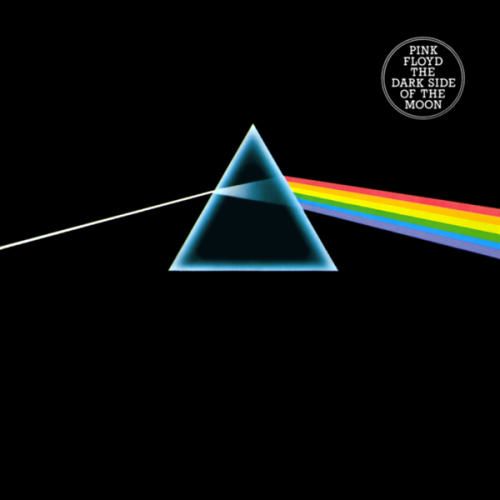Pink Floyd & Hipgnosis
Hipgnosis (Storm Thorgerson, Aubrey Powell, Peter Christopherson) was an English art design group based in South Kensington, London, that specialised in creating cover art for the albums of rock musicians and bands until 1983. One notable fact was that Hipgnosis did not have a set fee for designing an album cover but instead asked the artists to "pay what they thought it was worth", a policy that only occasionally backfired according to Thorgerson in his book on album cover design.
 Pink Floyd - The Dark Side Of The Moon (1973)
Pink Floyd - The Dark Side Of The Moon (1973)
design: Hipgnosis, George Hardie
The design represents three elements; the band's stage lighting, the album lyrics, and Richard Wright's request for a "simple and bold" design. The spectrum of light continues through to the gatefold. The light band emanating from the prism on the album cover has six colours, missing indigo compared to the traditional division of the spectrum into red, orange, yellow, green, blue, indigo and violet. (An actual prism would exhibit a continuous spectrum with no defined boundaries between colours, and colour separation would be present inside the prism.)
 Pink Floyd - Wish You Were Here (1975)
Pink Floyd - Wish You Were Here (1975)
design: Hipgnosis, George Hardie
The concept behind "Welcome to the Machine" and "Have a Cigar" suggested the use of a handshake (an often empty gesture). The album's cover image was inspired by the idea that people tend to conceal their true feelings, for fear of "getting burned", and thus two businessmen were pictured shaking hands, one man on fire. "Getting burned" was also a common phrase in the music industry, used often by artists denied royalty payments. Two stuntmen were used, one dressed in a fire-retardant suit covered by a business suit. His head was protected by a hood, underneath a wig. The photograph was taken at the Warner Bros. studios in Los Angeles. Initially the wind was blowing in the wrong direction, and the flames were forced into Rondell's face, burning his moustache. The two stuntmen changed positions, and the image was later reversed.
 Pink Floyd - Animals (1977)
Pink Floyd - Animals (1977)
design: Hipgnosis, Roger Waters
A view of Battersea Power Station was chosen for the cover image, and the band commissioned German company Ballon Fabrik (who had previously constructed Zeppelin airships) and Australian artist Jeffrey Shaw to build a 30 feet (9.1 m) porcine balloon (known as Algie). The balloon was inflated with helium and manoeuvred into position on 2 December, with a trained marksman ready to fire if it escaped. Unfortunately inclement weather delayed work, and the band's manager Steve O'Rourke neglected to book the marksman for a second day; the balloon broke free and disappeared from view. It eventually landed in Kent and was recovered by a local farmer, who was apparently furious that it had "scared his cows". The balloon was recovered and filming continued for a third day, but as the early photographs of the power station were considered better, the image of the pig was later superimposed onto one of those.